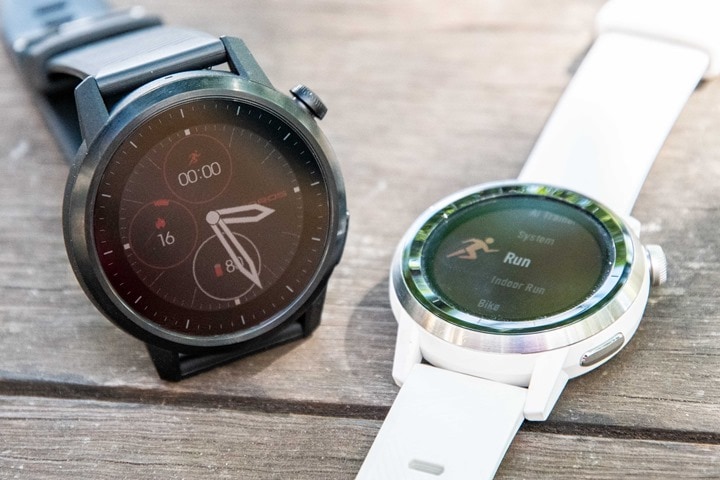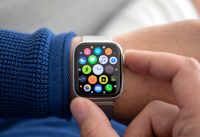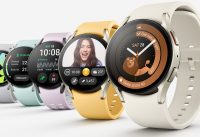Coros Apex Review: Smart Watch with Excellent Features & Designs
It is not easy to break into the multisport business and when it comes to serious sports watches, Garmin, Polar and Suunto have a strong presence in the market. Yet Coros seems to have just overcome it with its promising new mid-range, the Apex smartwatch.
Coros Apex Review
What you need to learn is that there are two separate Apex models are available: 42 mm and 46 mm. Both versions have outstanding battery life, although 35 hours GPS recording period is available in the larger version 46 mm compared to 25 hours in the 42 mm design. There is also a titanium bezel in the bigger model with a ceramic pattern of the 42 mm type.
These two watches have the same specifications of specific GPS, GLONASS and BDS range including a barometric altimeter, an accelerometer, a compass, and a gyro lens. The digital cardiovascular monitor is accessible and can be paired with external sensors such as heart rate monitors or cycling frequency, cadence or energy meters. But this is only feasible via ANT+ and not Bluetooth, and it does not currently support frustratingly running foot bowls.
The Apex also has some impressive functions, the most prominent one being activities for triathletes and duathletes other than swimming, running, and cycling. There are also no structured training programs beyond basic intervals. Coros plans to add these features in future updates to the device, but there is no timetable.
Cost & the Competition
Coros joined the multisport watch segment with the Pace in early 2018 (£250), but with a sleek model, longer battery life and breadcrumb navigation the Apex is a significant upgrade. The best thing is that, depending on the model that you choose, it costs £20 or £50 than Pace.
The Apex cost £300, in fact, and the smaller 42 mm model costs £270. Suunto Spartan Trainer Wrist HR (£170) and the Polar Vantage M (£203) and are also in a competition, because these companies are available in cheaper price than the Apex. They also have outstanding specifications. Nor does this equate to the Apex’s incredible life of the battery (and there is no navigation function for Polar) but both watches are more athletic than Coros.
The fantastic Garmin Forerunner 645 is also available at about £300 and provides improved all-round sport display than the Apex, together with innovative apps such as music replay and NFC payment through Garmin Pay.
Features & Design
Although the absence of athletic modes damages it, the Apex stands out with respect to its versatility in contrast to its competitors of larger brands. The Apex has the traditional 3-button or 5-button model typically used on multi-sport phones, in lieu of only two keys, one being also a twirler that is used during operation to navigate through menus and data screens.
It’s fair to say, with its silver and black model that appears a little reminiscent of the Vivoactiv 3 and the 3 Fitness, Coros has drawn its design inspiration from what is already on the market. Moreover, irrespective of how motivated, the Apex has a very good look that you can carry anywhere.
All versions have a glass sapphire screen, but the 240x 240 1.2-in edition of the 46 mm design is slightly wider than the 218x 218 1.1-in panel. None of the display wowed me about luminosity: although it can increase the life of the battery, a weak display can be difficult to read often, particularly during work, at glance.
Both the Apex’s weight were lightweight at about 51 g and 55 g and, even at night, I never considered the watch lumbering. Its silicone belt is handy too, and you can conveniently change it for various Coros colors.
Performance & Sports Tracking
Indoor, outdoor, biking or aquatic modes on the Apex, along with a custom triathlon mode in which you can choose whenever you want to do something on the three slots, be it a standard pool-bike ride or a bike-run Duatthlon. Apparition: Sports monitoring and results
Up to six data fields per display can be selected from the Coros mobile app for each of the sports modes. The same is true for both devices, but six fields is too much for the Apex 42 mm lower resolution monitor.
The most technical sports mode is walking since you can use the endurance and fitness impact functions of the device. Nevertheless, for a detailed insight into your running dynamics, you cannot attach a running foot pod. The Apex incorporates cycling sensors like power meters and cadence / speed detectors, but only via ANT+ and not Bluetooth, for other external sensors.
In terms of accuracy, I had no issues on this front with the Apex GPS measurements, very near that of a Garmin attached to a mounted soccer podium. With the optical heart rate sensor, though, results were not so fine.
I have used Apex for nearly six months and originally the cardiac screen was rather useless. Though late on, the calculation of a chest strap was much more accurate. The shift seems to have correlated with the warmer weather, which is no shock as optical heart rate monitors battle the temperature.
For the cold months, you will still need a chest strap screen, as in such circumstances the Apex is pretty useless, but you can discard it in Spring and feel very secure while reading the Apex.
Probably my best grasp on Apex precision was its success in the pool, where I noticed that the gap from my swimming was constantly underestimated. Both the measurements are measured to the right degree when I was running, but if I had to quit for a breath or even to go out of reach, I would sacrifice that distance.
If you are, like me, a not very good swimmer and need a break several times, you should be disappointed by the Apex figures. Many qualified swimmers haven’t informed you of such issues, though, and it might not be a concern for you if you are many seasoned.
This watch provides a strong set of bath information for your speed, movement, SWOLF and stroke frequency in the device afterwards. It also removes the move that is mostly perfect for my swimming, despite my poor training. It is no small feat.
Intelligent apps and Daily Activity Monitoring
The Apex is not what you would term the smartwatch, with the only true intelligent functionality it delivers from a connected mobile. The transmission of notice is at least successful with enough on-screen text that enables you to read long notifications without extending the alert.
When it comes to daily monitoring, luckily, moves, effective energy, time and heart rate control all of the day, as well as the sleep hours reported when you keep an eye on the night are something more amazing. Things are more impressive. Furthermore, with this information from the mobile app, for instance, you do not monitor long-term patterns in Garmin Connect. You can only see yourself every day, then. I also considered the sleep information to be somewhat unreliable, with noticeable’ wake-up’ times reported each night even though I didn’t remember waking up in the afternoon.
Verdict Many parts of the Apex may not be rivals but still provide anyone who wants the multisport watch with less than £ 300 with a convincing kit. Like the Suunto 9, batteries are its main selling point, but the Polar Vantage M provides you with a refined all-round user experience if you can survive without such endurance.
Nonetheless, this is one of the simplest multi-sport devices to mount and use, which is the Apex breadcrumb control. As Coros introduces more sport styles, the technical ideas are set and the price of the Apex is very strong.
Read Next: Polar Vantage V Released – We Take a Look at the Specifications




